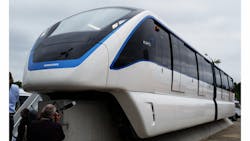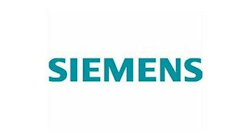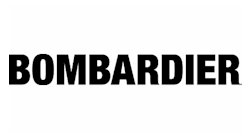InnoTrans, the international trade fair for rail technology, opens Tuesday, September 23 in Berlin and it is 16 times larger than the first event when it started in 1996. The percentage of international exhibitors has continued to grow with 55 countries represented this year, the 10th anniversary of InnoTrans.
Messe Berlin GmbH Chief Executive Officer Dr. Christian Göke said the most growth has been seen from Asia and the Americas, in particular China and the United States. International exhibitors account for 61 percent of the 2,758 exhibitors.
Göke said there were three primary reasons for the extraordinary involvement at InnoTrans. First is the location of Berlin, Germany. He said there’s strong German industry in this sector and Berlin’s a connection between Eastern and Western Europe. Second, the trade show has invested in this event, especially in the rail network on the grounds. There is just over 2 miles of track and the investment made in the track, he said, reflects the importance of this event. Lastly, Göke said they have tried to represent the entire range of the sector to show all the aspects and details of the industry.
Association of the European Rail Industry (UNIFE) Managing Director Philippe Citroën talked about the World Rail Market Study, a biennial report by UNIFE that covers the development of the global rail supply market. The study provides a detailed analysis of 55 focus countries, including the major existing rail markets and the most promising emerging ones. The study also includes two detailed extensive analysis of the Russian and U.S. rail markets.
Citroën said that despite low economic growth overall, the rail industry grew 1.5 percent. Services and rolling stock account for the majority of the market, especially in maintenance, and infrastructure is the third largest segment.
The forecasted growth through 2019 will remain strong, with a 2.7 percent per annum predicted over the next 6 years. Several trends have driven the growth, including population growth, urbanization and increased demand for mobility, climate change and environmental concerns and deregulation. Regions with key significance will be Latin America, Asia/Pacific, Africa/Middle East and the North Americas.
Despite the economic crisis faced by many countries, Citroën pointed out that the rail industry has remained resilient to the ups and downs and it continues to see steady growth. Also important will be alternative financing models, such as public-private partnerships.
Worldwide Challenges
German Railway Industry Association (VDB) Managing Director Prof. Dr. Ronald Pörner gave an overview of the German rail industry, which is facing many of the same challenges as the U.S. A source of major concern, he said, is the slow business when it comes to infrastructure equipment and supplies and the Germany rail network is in need of catching up. Their needs are about $1.5 billion for replacement of signaling, tracks and communications. He mentioned the majority of their mechanical switching tours were from a time when there was still an emperor in Germany.
He mentioned that the North American markets, in particular the United States, are especially important for the German companies.
Bureaucratic red tape is one area where there are challenges to overcome and the federal ministry for public transport started a reform on procedure last year to simplify the authorization process. The first draft law is expected to be discussed this October.
Dr. Martin Henke, managing director of the Association of German Transport Companies (VDV) also spoke to some of the challenges faced by the rail industry. “We’re struggling with energy costs, infrastructure costs, and bureaucracy and regulation costs,” he stated. Building costs grew by nearly 4 percent and public financing cannot offset this cost, he said. Growth related to energy costs will see two-digit growth the industry will need to shoulder. And mirroring what Pörner had said, the red tape and bureaucracy has made the situation worse.
He added, “All the things the railways need to guarantee compared to airways, there is a great discrepancy. Railways have to pay much more and it is a great burden for passenger transport.”
Overview of Innovations and Products
There are 140 products making their world premiere at InnoTrans this year and 145 vehicles on display on the outdoor rail track.
GE Transportation President and CEO Russell Stokes said they are transitioning from diesel to liquefied natural gas (LNG). When asked about electric, Stokes said when looking at passenger hybrids, they need the right performance at the right price and their next-generation fuel application is going toward LNG.
Siemens was highlighting its debut of the Desiro City cars to operate on the Thameslink line and product manager for development of regional train sets, Hans-Jörg Grundmann, talked about the passenger information system it provides. The trains sends information to the station ahead, which cars are packed so riders know where to stand to get on a car to find a seat, which means quicker boarding times. Also of interest are that there are no boxes below the seats, everything is either on the roof or in the undercarriage. It provides more room for passengers and lowers cleaning costs as it makes it easier to quickly clean.
China’s CSR Corporation Limited talked about two of its latest products: the low-floor tram with energy storage and a high-speed train with permanent magnet drive. The low-floor tram combines super capacitor technology with a 100 percent low-floor vehicle. The onboard super capacitor is charged at stops to maintain the vehicle’s full power supply and catenary is no longer required on the length of the line. It only takes 30 seconds for the super capacitor to be fully recharged at passenger stops. The “green high-speed train of the future” has a traction transmission technology of perpetual magnet motors to increase the transmission efficiency by 3 percent showing advantages in energy conservation and environmental protection. Traction transmission technology in perpetual magnet motors is the leading trend in the development of drive mode on high-speed EMU.
Bombardier presented its fully automated, driverless Innovia monorail, which provides faster, high-capacity transportation. The system provides full driverless automation, high-speed guideway switching, bi-directional operation and offers speeds of up to nearly 50 miles per hour.





